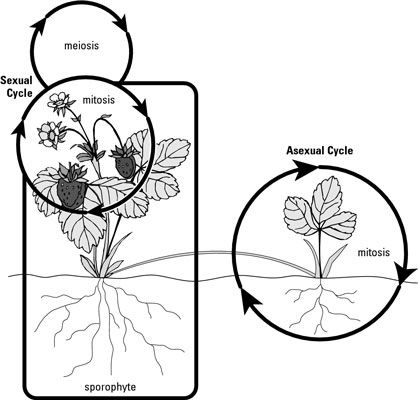SOMETHING ENGAGING
- sabrinalinzau
- Jan 1, 2016
- 2 min read
Tons of people think that plants do not sexually reproduce, that only animals can do that. However, this is a misconception. Plants can reproduce sexually because they do a process called meiosis which takes half of the genetic information from one parent and the other half from the other parent. This process leaves the plant parents with a "genetically unique" organism which has two of every chromosome. One plus for sexual reproduction of plants is that this creates more diversity in the offspring which increases the likelihood of that species surviving.
One common reason that people have the misconception about plants not reproducing sexually is because they think that if the plant doesn't have a visable penis or vagina then it can't reproduce sexually. However, the truth is that instead of a vagina or a penis, plants have a stamen for males and a pistil for females.
All plants can reproduce asexually and sexually. According to "Biology Workbook for Dummies," the advantage when plants reproduce sexually is that it creates more diversity of offspring. In asexual reproduction, the plant basically just creates an exact copy of the parent plant. The disadvantages are that for plants to reproduce sexually they need to find a partner and often they need liquid water for the sperm to swim from one plant to another or some other way for the sperm and egg to get together. Here is a really good picture from "Biology Workbook for Dummies" to show the differences between the two ways of reproducing in plants:

According to Biology4Kids, reproduction in plants happens one of two ways: (1) Asexual reproduction, where one cell splits into two cells and gives you two identical cells, or (2) Sexual reproduction, where two cells, each with half of the DNA needed, combine into one living cell. There is a great variety of ways in which plants reproduce. Here are a few interesting examples:
Mosses have sporophytes, which are stalks that grow when the egg of a female moss plant and the sperm of a male moss plant mix together. These stalks are then released and grow into new moss plants.
Conifers or pine trees produce a male and female cone on the same tree. One of the cones (the male one) gives off pollen, while the female cone catches the pollen if the wind is moving in the right direction. Sometimes the wind even blows the pollen to another tree.
Flowers have the most advanced way of reproducing because the parts that make and receive pollen are in the same structure within the flower. Plants that have flowers depend on outside help such as bees or other animals to carry the pollen from one flower to another flower.
So while there are a lot of ways that plants can reproduce, they can definitely do it sexually but they can also do it asexually, which is kind of strange to me but cool at the same time.
Andrew Rader Studios. "Plant Reproduction - They'll Make More." Biology4Kids.com: Plants: Reproduction. N.p., 1997. Web. 31 Dec. 2015. <http://www.biology4kids.com/files/plants_reproduction.html>.
Kratz, Rene Fester. "Plant Reproduction." Biology Workbook For Dummies. Hoboken: John Wiley & Sons, 2012. N. pag. Print.
Comments